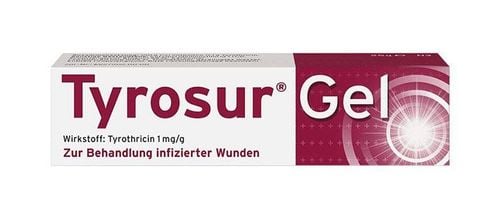This is an automatically translated article.
Apifexo contains the active ingredient Fexofenadine, an active metabolite of Terfenadine. The drug has a competitive antagonism with histamine at the H1 receptor sites.
1. Mechanism of action of the drug Apifexo
The active ingredient in Apifexo is Fexofenadine. Fexofenadine is an active metabolite of terfenadine and has the same mechanism of action as terfenadine, competing with histamine for H1-receptor sites on cells in the gastrointestinal tract, blood vessels, and respiratory tract. Fexofenadine does not cross the blood-brain barrier and is therefore not capable of sedation.Currently, Apifexo drugs on the market have many different strengths such as:
Apifexo 60 mg; Medicine Apifexo 120 mg; Apifexo 180mg. 2. Indications of the drug Apifexo Apifexo tablets are indicated in the following cases:
Symptomatic relief in seasonal allergic rhinitis in adults and children 6 years of age and older. Symptoms that are effectively treated with Fexofenadine are sneezing, runny nose, itchy nose/mouth/throat, itchy or watery eyes, and red eyes. Treatment of skin symptoms in chronic idiopathic urticaria in both adults and children 6 years of age and older. Medicines can provide rapid relief of itching and urticaria.
3. Dosage and how to use Apifexo
3.1 How to take Apifexo The drug Apifexo is taken orally. The time of taking Fexofenadine does not depend on the meal.
3.2 Apifexo dosage Adults and children 12 years of age and older:
Allergic rhinitis and chronic urticaria: 1 tablet of Apifexo 60 mg x 2 times/day or 180 mg x 1 time/day. Patients with renal impairment and the elderly:
The recommended starting dose is 60mg/time x 1 time/day. Adjust dosage according to renal function. Children under 12 years old:
Because there is not enough evidence, it is not recommended to use 4. What are the side effects of Apifexo? Frequency > 10%:
Central nervous system: Headache; Digestion: Vomiting. Frequency 1 to 10%:
Central nervous system: Fatigue, drowsiness, dizziness, pain; Gastrointestinal: Diarrhea, nausea, dyspepsia; Genitourinary: Dysmenorrhea; Infection: Viral infection; Neuromuscular and skeletal: Muscle pain, back pain, limb pain; Ear: Otitis media; Respiratory: Upper respiratory tract infection, cough; Other: Fever. Frequency <1%:
Hypersensitivity reactions, including: Anaphylaxis, angioedema, chest tightness, dyspnea, flushing, pruritus, skin rash; Urticaria, anxiety, nightmares, sleep disturbances. In summary, Apifexo is an H1 antihistamine used for the treatment of allergic symptoms, urticaria, and allergic rhinitis. The drug is relatively safe and easily tolerated. The most common side effects are headache, dizziness, and fatigue. Patients should not self-medicate, but should consult a doctor or pharmacist before use.
Please dial HOTLINE for more information or register for an appointment HERE. Download MyVinmec app to make appointments faster and to manage your bookings easily.













